
Ronald Arbuthnott Knox was an English Catholic priest, theologian, author, and radio broadcaster. Educated at Eton and Balliol College, Oxford, where he earned a high reputation as a classicist, Knox was ordained as a priest of the Church of England in 1912. He was a fellow and chaplain of Trinity College, Oxford until he resigned from those positions following his conversion to Catholicism in 1917. Knox became a Catholic priest in 1918, continuing in that capacity his scholarly and literary work.
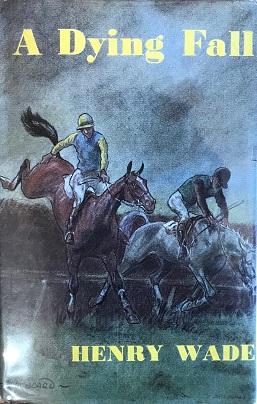
A Dying Fall is a 1955 mystery detective novel by the British writer Henry Wade. It was the penultimate novel by Wade, one of the leading writers of the Golden Age of Detective Fiction. It was followed by his final novel The Litmore Snatch two years later

The Verdict of You All is a 1926 mystery detective novel by the British writer Henry Wade, his debut novel. Both this and his following novel The Missing Partners revolve around potential miscarriages of justice. It was published in the United States by Payson and Clarke in 1927. A success it launched his career as one of the prominent writers during the Golden Age of Detective Fiction. The title refers to the traditional question asked in court by a judge of the jury to establish whether they have reached a unanimous verdict.

The High Sheriff is a 1937 mystery detective novel by the British writer Henry Wade. Wade was a writer of the Golden Age of Detective Fiction, best known for his series featuring Inspector Poole. This was one of a number of stand-alone novels he wrote, structured as a partially inverted detective story.

Released for Death is a 1938 crime thriller novel by British writer, Henry Wade. Wade was a writer of the Golden Age of Detective Fiction, best known for his series featuring Inspector Poole. This was amongst a number of stand-alone novels he wrote. It has elements of an inverted detective story, rather than the traditional closed circle of suspects.
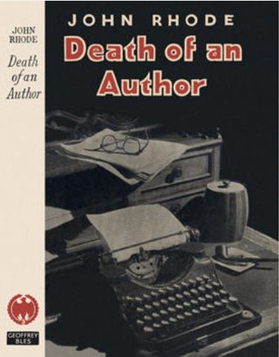
Death of an Author is a 1947 detective novel by John Rhode, the pen name of the British writer Cecil Street. It is the forty fifth in his long-running series of novels featuring Lancelot Priestley, a Golden Age armchair detective. The New Yorker described it as "Rather pleasant, in a ponderous fashion" while Will Cuppy, writing in the New York Herald Tribune, felt "Mr. Rhode provides one of those satisfying British stories in the old tradition, full of mystery meat and brain-work."

Nothing But the Truth is a 1947 detective novel by John Rhode, the pen name of the British writer Cecil Street. It is the forty fourth in his long-running series of novels featuring Lancelot Priestley, a Golden Age armchair detective.
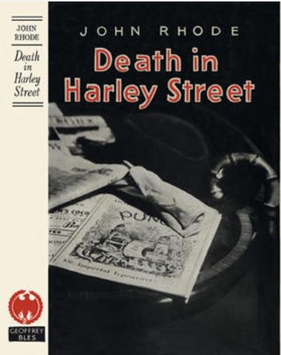
Death in Harley Street is a 1946 detective novel by John Rhode, the pen name of the British writer Cecil Street. It is the forty third in his long-running series of novels featuring Lancelot Priestley, a Golden Age armchair detective. Several sources consider it to be the author's masterpiece.

Up the Garden Path is a 1949 detective novel by John Rhode, the pen name of the British writer Cecil Street. It is the forty ninth in his long-running series of novels featuring Lancelot Priestley, a Golden Age armchair detective. It was published in America by Dodd Mead under the alternative title The Fatal Garden. Reviewing the novel in The Observer, Maurice Richardson concluded "Mr. Rhode has lost very little of his grip."

The Paper Bag is a 1948 detective novel by John Rhode, the pen name of the British writer Cecil Street. It is the forty sixth in his long-running series of novels featuring Lancelot Priestley, a Golden Age armchair detective. It was published in America by Dodd Mead under the alternative title The Links in the Chain.

The Two Graphs is a 1950 detective novel by John Rhode, the pen name of the British writer Cecil Street. It is the fiftieth in his long-running series of novels featuring Lancelot Priestley, a Golden Age armchair detective. It was published in America by Dodd Mead under the alternative title Double Identities. Writing in The Observer Maurice Richardson noted a "slight slackening of tension towards the finish but an excellent specimen of Rhode’s later period."

The Telephone Call is a 1948 detective novel by John Rhode, the pen name of the British writer Cecil Street. It is the forty-seventh in his long-running series of novels featuring Lancelot Priestley, a Golden Age armchair detective. It was published in America by Dodd Mead under the alternative title Shadow of an Alibi. It is based on the real-life Wallace Case of 1931 in which William Herbert Wallace was convicted of murdering his wife Julia, a conviction which was later overturned on appeal.
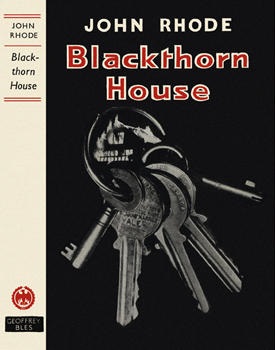
Blackthorn House is a 1949 detective novel by John Rhode, the pen name of the British writer Cecil Street. It is the forty eighth in his long-running series of novels featuring Lancelot Priestley, a Golden Age armchair detective.

Vegetable Duck is a 1944 detective novel by John Rhode, the pen name of the British writer Cecil Street. It is the fortieth in his long-running series of novels featuring Lancelot Priestley, a Golden Age armchair detective. The title refers to a dish including a Marrow stuffed with minced beef, which features in the plot. It has been described as "one of the oddest titles for a detective novel in the genre". Although written during wartime, the setting was post-war. It was published in America by Dodd Mead under the alternative title Too Many Suspects.

Death Invades the Meeting is a 1944 detective novel by John Rhode, the pen name of the British writer Cecil Street. It is the thirty ninth in his long-running series of novels featuring Lancelot Priestley, a Golden Age armchair detective. Reviewing the novel for the Times Literary Supplement Maurice Willson Disher noted "His ingenuity is becoming as delicate to handle as high explosive. His stories may become so difficult to review without saying too much that his triumph will come when they cannot, for discretion’s sake, be reviewed at all."

Murder in Crown Passage is a 1937 detective novel by the British writer Cecil Street, writing under the pen name of Miles Burton. It is the sixteenth in a series of books featuring the amateur detective Desmond Merrion and Inspector Arnold of Scotland Yard. Street was one of the most prolific authors of the Golden Age of Detective Fiction. It was published in the United States by Doubleday the same year under the alternative title The Man with the Tattooed Face. As often in the series, the setting is in rural England.
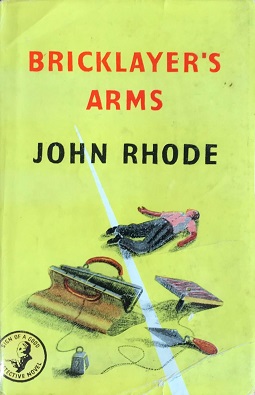
Bricklayer's Arms is a 1945 detective novel by John Rhode, the pen name of the British writer Cecil Street. It is the forty first in his long-running series of novels featuring Lancelot Priestley, a Golden Age armchair detective. It was published in America by Dodd Mead under the alternative title Shadow of a Crime. It was particularly notable for the lesser role played by Priestley, with the case being solved largely by Inspector Waghorn of Scotland Yard alone.

They Watched by Night is a 1941 detective novel by John Rhode, the pen name of the British writer Cecil Street. It is the thirty fifth in his long-running series of novels featuring Lancelot Priestley, a Golden Age armchair detective. It was published in the United States by Dodd Mead with the alternative title Signal for Death.

The Footsteps at the Lock is a 1928 detective novel by the British author Ronald Knox. Written during the Golden Age of Detective Fiction it is one of five books featuring his insurance investigator Miles Bredon. The author was very familiar with the area of western Oxfordshire, where much of the novel takes place.

Still Dead is a 1934 mystery detective novel by the British author Ronald Knox. It is the fourth in a series of five novels featuring the insurance investigator Miles Bredon, one of the many detectives of the Golden Age of Detective Fiction. It was published in London by Hodder and Stoughton and in New York by Dutton.




















